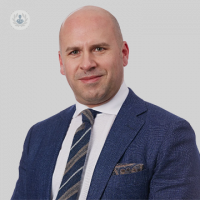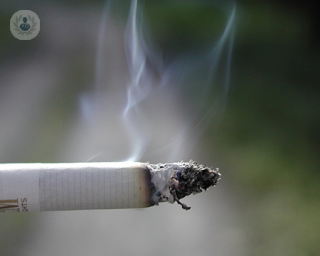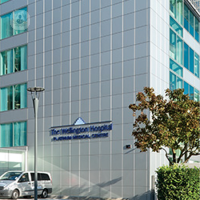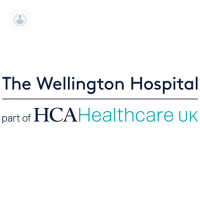Pulmonary emphysema
Mr Marco Scarci - Cardiothoracic surgery
Created on: 11-13-2012
Updated on: 04-14-2023
Edited by: Carlota Pano
Pulmonary emphysema is a type of chronic obstructive pulmonary disease (COPD). This disease occurs when the pulmonary alveoli are gradually destroyed, making it increasingly difficult to breathe. When the alveoli are destroyed, a larger space is created, instead of multiple small chambers. This affects the expansion of the lungs and the amount of oxygen that reaches the blood.
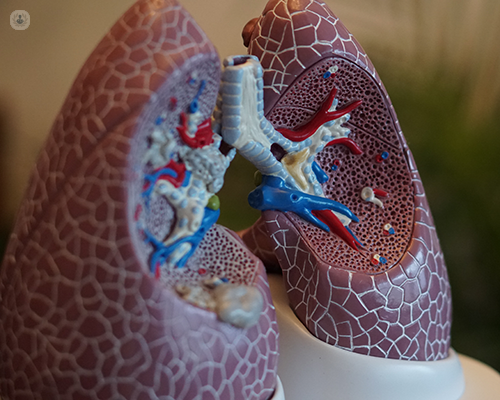
What is pulmonary emphysema?
This is a disease that gradually destroys the fibres that make the inside of the lung. The result is that the gas exchange is impaired, and oyxgen does not go into the circulation. Paradoxically, there is more air than normal in emphysematous lungs, but the oxygen fails to be delivered, as the lung is internally destroyed.
Symptoms of pulmonary emphysema
The most common symptom of pulmonary emphysema is shortness of breath, which gradually worsens. The affected person starts avoiding activities that cause shortness of breath in order to relieve the problem. However, the disease worsens to the point that it prevents the person from carrying out daily activities. Emphysema reaches its peak when the person finds it difficult to breathe even when at maximum rest.
What causes pulmonary emphysema?
The main cause of pulmonary emphysema is exposure to airborne irritant, such as those listed below:
- tobacco smoke and marijuana
- air pollution
- manufacturing gases
- silica and coal dust
It can also be caused by an inherited defect, but only in a small number of cases.
Can it be prevented?
The best way of preventing pulmonary emphysema is not to smoke and to avoid passive smoking. It is also advisable to wear a mask if you are in contact with dust or chemical vapours in your workplace. It is recommended to follow the advice below:
- Exercise regularly: Physical exercise can increase lung capacity despite breathing difficulties.
- Protect yourself from cold air: Cold air can cause bronchial spasms, making it difficult to breathe. Wear a scarf over your nose and mouth during the winter to warm the air you inhale.
- Avoid other respiratory infections: Get vaccinated against pneumonia and the flu. Avoiding contact with people with a cold or the flu is also a good preventive measure.
What does treatment involve?
There is no cure for pulmonary emphysema, but some treatments can relieve symptoms and slow the progression of the disease. Treatments can be divided into three groups: medication, therapy, and surgery.
Medication: There are different types of medications that can reduce the severity of the symptoms. Smoking cessation medications are prescribed by a doctor and can help you to stop smoking. Bronchodilators can help alleviate coughing, shortness of breath, and breathing difficulties. Inhaled steroids and bronchodilators can help relieve shortness of breath. Lastly, antibiotics are used if a bacterial infection develops, such as bronchitis or pneumonia.
Therapy: There are two types of therapy: pulmonary rehabilitation and oxygen supplementation that supplements the regular medical treatment with inhalers. The former is a rehabilitation programme that can help reduce the sensation of breathlessness and improve lung capacity. Oxygen supplementation is used with people who suffer from severe emphysema and who have low blood oxygen levels.
Surgery: Similarly, there are two different types of surgery depending on the severity of the emphysema: lung volume reduction and lung transplantation. Lung volume reduction can be achieved either through an operation or, in selected cases, using one-way valves inserted into the affected airways. In the former, surgeons remove small wedges of affected lung tissue. This helps the healthy lung tissue to work more efficiently, and thereby improve breathing. Endobronchial valves also work similarly; they effectively exclude the most diseased part of the lungs and force the air towards the better part.
Lung transplantation is performed only in young patients if you have severe emphysema and all other treatments have failed.
